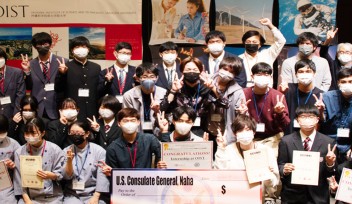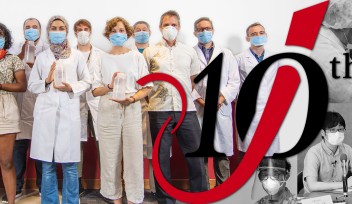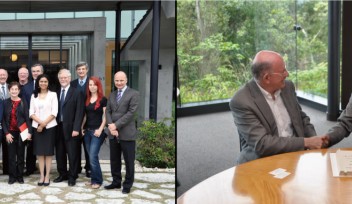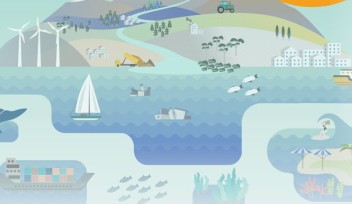Educating and inspiring Okinawa’s future generation
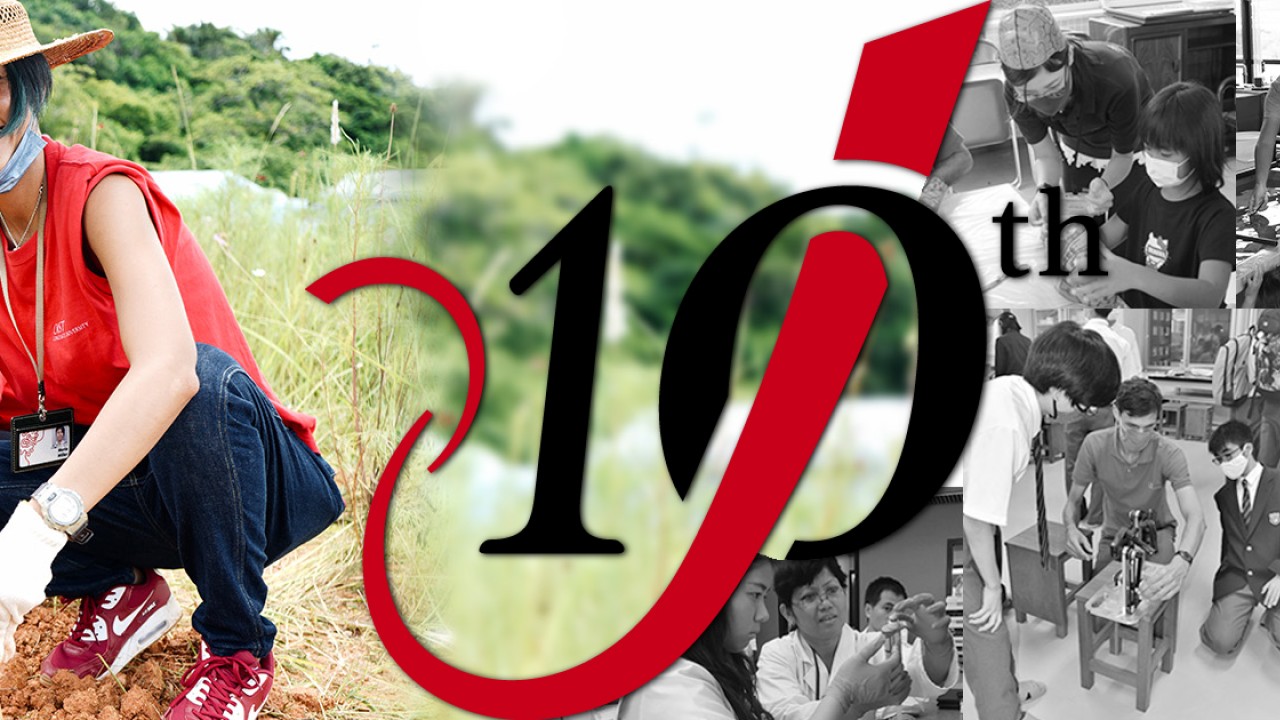
To commemorate 10 years since the Okinawa Institute of Science and Technology Graduate University (OIST) was established, the university’s president Dr. Peter Gruss reflects on OIST’s connection to Okinawa in a four-part series focusing on the economy, education, environment, and health, respectively.
Okinawa, Japan’s southernmost prefecture, is a chequerboard of contrasting identities. This remote cluster of islands is known as Japan’s “paradise,” where residents live some of the longest, healthiest and happiest lives in the world, set against a backdrop of azure blue ocean and idyllic beaches. But behind the utopian image lies hidden struggles with economic and educational inequality.
“Rates of child poverty are higher in Okinawa compared with the rest of Japan,” said Peter Gruss, the current president and CEO of OIST. “As a result, a lower proportion of young people pursue higher education, and of them, even fewer focus on science subjects at university.”
While these issues are complex and cannot be solved by a single actor, President Gruss hopes that OIST can contribute to their resolution, in partnership with the Okinawan prefectural government, the Japanese government, and local educators.
“There is so much that OIST can bring to Okinawa,” he said. “One of the most important things we can do — and have already begun to do — is to generate in young people a keen interest in science and a desire for a post-secondary education through high-quality outreach programs.”
In the ten years since it was founded, OIST has kickstarted numerous initiatives to inspire and mentor Okinawa’s schoolchildren in STEM (science, technology, engineering, and mathematics) areas. In a typical year, around 4,000 children, ranging from elementary school to senior high school, tour the OIST campus and talk to researchers. Once a year, OIST also holds its flagship open campus event, the “Science Festival.” The event, aimed at families, exposes children to the fun side of science, from dancing robots to making ice-cream with liquid nitrogen. In total, around 5,000 people visit OIST’s campus for the fair.
One of OIST’s longest running events is SCORE!, short for “SCience in Okinawa: Research for Enterprise,” which has been hosted by OIST since 2012, in collaboration with the U.S. Consulate General, Naha. At this annual competition, high-school students in Okinawa present unique research ideas with an entrepreneurial angle. The program aims to foster skills in business, science and English, with winning team members receiving study trips to the U.S. and internships at OIST.
OIST has also concentrated its efforts on encouraging girls to enter STEM fields. “Out of all the OECD countries, Japan is at the bottom in terms of gender balance in STEM. Japan is missing out on a lot of female scientists and professionals,” said President Gruss. “We are dedicated to addressing this gender imbalance with our outreach activities.”
One initiative organized in collaboration with Okinawa Prefecture is the HiSci Lab, an annual outreach event that introduces high school girls to successful female scientists at OIST, giving them the opportunity to carry out science activities and workshops. The participants join from all over the prefecture, including the remote islands of Miyako, Ishigaki, and Kume.
These activities have been made possible through the understanding and support of many people in Okinawa, as well as through cooperation with Okinawa Prefecture and other municipalities. In particular, the Okinawa Prefectural Council for the Promotion of the Development of the Okinawa Institute of Science and Technology, which was established by Okinawa Prefecture to support OIST's activities in general by calling on a wide range of organizations from various fields, has been supporting these activities for a long time.
OIST’s PhD students also play an integral role in helping combat educational inequality while strengthening their own connection to the local community. Amongst other outreach initiatives, OIST students work with the University Consortium Okinawa’s IBASYO program, which provides safe shelter, warm meals and company for children, many of whom are from low-income background or have special educational needs. OIST students work with IBASYO to provide fun science-related activities and act as influential role models. PhD students can also sign up for the Okinawa Science Mentorship Program (OSMP), giving students the opportunity for in-depth exploration of different research fields, and an understanding of day-to-day life as a researcher.
These outreach programs are already starting to give tangible results. Miku Sugama, a recent graduate from Miyako High School who joined OSMP over the summer in 2019 said the one-on-one interactions gave her the invaluable experience of working in a lab and discussing research, intensifying her desire to pursue a scientific career. She has stayed in touch with her mentor and is interested in studying biochemistry or pharmacy at university. One day, she aspires to create a medicine without side effects.
Nina Harano, who also participated in OSMP and is now studying at Columbia University, New York, regards OIST as influential in her decision to study neurobiology. She maintains a deep connection to OIST, returning during her undergraduate as a research intern, and now wishes to apply for a PhD degree.
Over the coming years, OIST plans to expand these outreach programs, using philanthropic investment from two funds launched this year in partnership with the U.S-based OIST Foundation, as well as actively seeking additional donations. The Rita R. Colwell Impact Fund will be used to support women in science broadly, including grant opportunities to help nurture an interest in science for Okinawan girls, and the Matsuro and Tsuruko Nakasone Fund will support hands-on science education activities, primarily for younger schoolchildren and for girls.
“Our programs provide educational opportunities for students not only to understand problems and issues, but also to think about how to solve them,” said President Gruss. “We want to be able to equip Okinawan school children with the skillset they need to pursue professional jobs, in STEM and beyond.”
“We are at the start of the fourth industrial revolution and over the coming decades, most industries will change. Sixty-five percent of the children that are in primary school right now will work in a job that has not yet been generated. So it’s crucial to prepare the minds of children so that they can go out and meet these new challenges. This is one of the most important ways that OIST can help create a better future for Okinawa.”
To see some of the OIST community who have volunteered with these programs, please watch here.
Related articles
For press enquiries:
Press Inquiry Form










